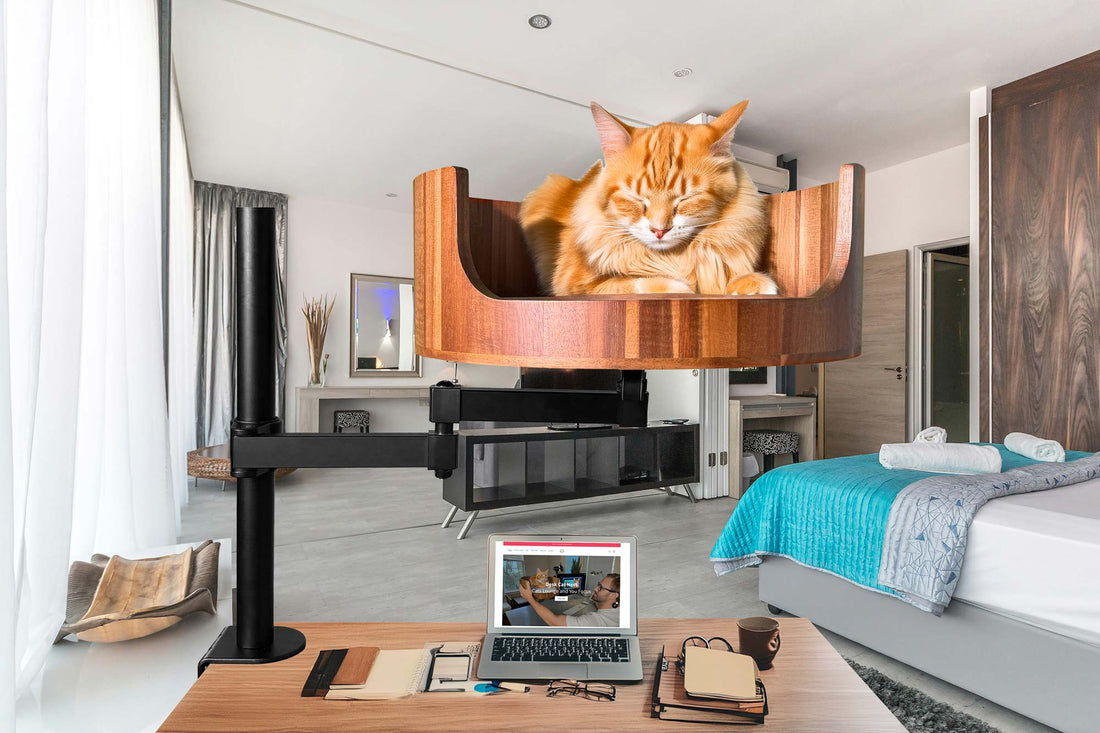
Why Does My Cat Lick My Other Cat Then Bites Him?
Share
If you have multiple cats in your home, you may have witnessed one of them licking and then biting the other. This behavior, while confusing and sometimes concerning for cat owners, is actually quite common among feline companions. In this article, we will explore the reasons behind why cats exhibit this behavior and what it could mean for their relationship with each other.
Cats use grooming as a way to bond with each other and establish social hierarchy within their group. When one cat licks another, it is a sign of affection and trust. However, the behavior can sometimes escalate into a bite if the cat being groomed becomes overstimulated or uncomfortable. Understanding the dynamics of your cats' relationship and body language can help you decipher why one cat may be licking and then biting the other. By addressing any underlying issues or providing appropriate outlets for their behavior, you can help foster a harmonious relationship between your feline companions.
1. Grooming behavior in cats is a natural social bonding activity, but can sometimes lead to aggression if boundaries are crossed.
2. Cats may lick each other as a sign of affection or to assert dominance within their social hierarchy.
3. Biting during grooming can indicate discomfort, stress, or overstimulation in cats.
4. Understanding cat body language and behavior cues can help prevent conflicts between feline housemates.
5. Providing multiple resources such as food, water, and litter boxes can reduce competition and tension among cats in the household.
Understanding cat behavior
Cats use licking as a form of social grooming and affection towards each other. This behavior releases endorphins that help them feel calm and secure. However, biting after licking could be a sign of overstimulation or aggression. Cats may become overstimulated during social interactions, leading to a bite response. It's important to pay attention to your cats' body language and cues to understand their behavior better.
Establishing hierarchy
Licking followed by biting could be a way for cats to establish dominance or hierarchy within their group. The act of grooming is a submissive behavior, while biting could be a way for the dominant cat to assert control. In multi-cat households, it's common for cats to display these behaviors as a way to maintain order and boundaries. Understanding the dynamics between your cats can help prevent any potential conflicts.
Addressing underlying issues
If you notice that one of your cats is constantly licking and biting the other, it could be a sign of underlying issues such as stress, anxiety, or even medical problems. Cats may exhibit redirected aggression towards each other if they are feeling overwhelmed or threatened. In some cases, consulting with a veterinarian or animal behaviorist can help address any underlying issues causing this behavior. Providing a stress-free environment and plenty of resources can also help alleviate tensions between your cats.
Desk Cat Nest FAQ
Why does my cat lick my other cat then bite him?
There are a few reasons why a cat may exhibit this behavior towards another cat. One possibility is that the licking is a sign of affection or grooming, while the biting may be a form of playfulness or establishing dominance. It could also be a way for the cat to communicate its boundaries or assert its hierarchy within the household.
Is this behavior normal?
This behavior is relatively common among cats and is often a part of their social interactions. However, it is essential to monitor the situation to ensure that it does not escalate into more aggressive behavior or lead to injury. If you have any concerns about your cats' interactions, it is best to consult with a veterinarian or animal behaviorist for guidance.
How can I discourage this behavior?
There are several ways you can discourage this behavior, such as providing each cat with their space, ensuring they have enough resources (food, water, litter boxes) to prevent competition, and engaging them in interactive play to redirect their energy. Additionally, using tools like pheromone diffusers or consulting with a professional can help address any underlying issues contributing to the behavior.
In conclusion, providing your cats with a Desk Cat Bed can help alleviate tensions and aggression between them. This comfortable and spacious bed offers a safe space for your cats to relax and unwind, reducing the frequency of confrontations such as licking and biting. By giving your cats their own designated area to rest and recharge, you are promoting a harmonious environment in which they can coexist peacefully. Invest in a Desk Cat Bed today for a happier and more tranquil household for both you and your feline companions.



















































